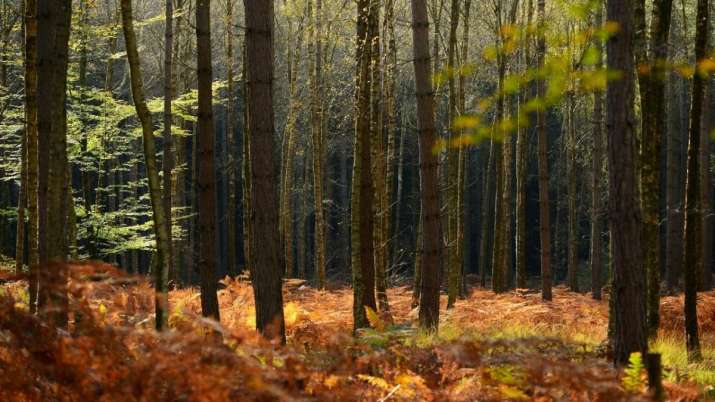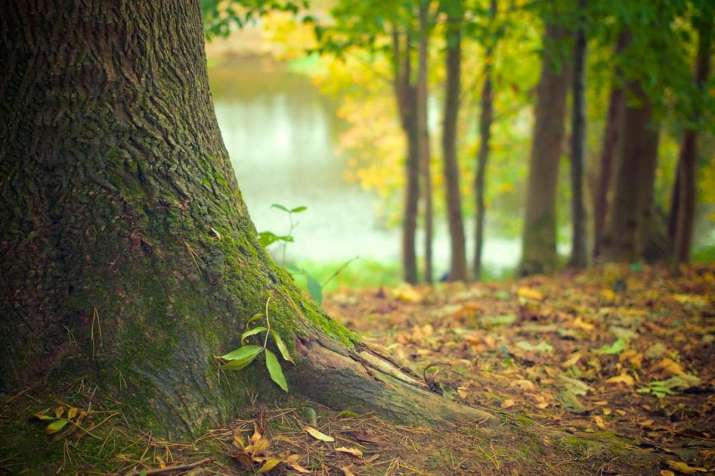NEWS
Is Climate Change Causing American Trees to Migrate West?
 From youtube.com
From youtube.comClimate change is having a profound effect on biodiversity and ecosystems around the world, affecting ocean currents, weather patterns, species populations, and animal migratory habits in ways that scientists are only just beginning to understand. A startling new study has found that even tree populations in the United States are responding to climatic changes, with dozens of the most common species migrating apparently away from traditional territories over the last 30 years—in some cases by as much as a mile (1.6 kilometers) per year.
In the study, published in the journal Science Advances, Purdue University professor Dr. Songlin Fei and his colleagues studied surveys of tree populations carried out since the 1980s. In particular, the study notes, conifers such as pines have been migrating northwards, while deciduous trees are heading west. Although the reasons why are not entirely clear, the researchers believe changing rainfall patters may be a major factor behind the migration.
Based on their research, the scientists believe that warmer, drier conditions in much of the eastern US over the last three decades have resulted in pines and other evergreens in the southeast moving farther north than they did in the years before 1980, while oaks, maples, and other northeastern hardwoods are shifting west of their traditional ranges. Detailed observations of 86 tree species showed, in general, that concentrations of eastern tree species have shifted more than 45 kilometers miles west and 33 kilometers north.
“[It] was a huge surprise for us,” said lead researcher Fei, a forest ecologist. “The southeast has had a dramatic reduction in precipitation. The western portion of the study area has more moisture available compared to the historical average.” (Science Alert, Seeker)
Fei and his team analyzed 30 years of data from the US Forest Service, which covered the movements of 86 tree species between 1980 and 2015 located between Maine and Minnesota, and as far south as Florida. “These are boots on the ground, this is something I think is really unique about this study,” said Fei. “This is empirical data—people on the ground, counting the trees, not modeling or estimating how many trees we have or how many we’ll have in the future.” (Seeker)
One of the most startling examples of this migration is the scarlet oak, which has moved more than 205 kilometers northwest from the Appalachians in the 30-year period, reducing the scarlet oak population in the southeastern US and increasing that in the Midwest.
“I think one very important thing from our study was that we’d better pay close attention to precipitation patterns and moisture change. Changing moisture variability has a much stronger near-term impact on the ecosystem that we’re looking at than temperature.” Fei noted. He added that the team had also factored in other external influences, such as logging and changes to which tree species are planted and where. (Seeker)
The research is also complicated by other factors that can have a measurable impact on tree populations, such as the fact that forests in the eastern US are complex and inhabited by people. Other researchers note that forests in this region are still recovering from large-scale clearing before the 1920s, and that the evolving tree distribution could also be a result of the natural succession of species through an area, combined with the impact of human management activities such as forest fire suppression.

“This analysis provides solid evidence that changes are occurring ,” agreed former US forest chief Michael Dombeck. “It’s critical that we not ignore what analyses like these and what science is telling us about what is happening in nature.” (Associated Press)
See more
Trees in eastern US head west as climate changes (Nature)
Go west, young pine: US forests shifting with climate change (Associated Press)
Divergence of species responses to climate change (Science Advances)
American Trees Have Started Migrating West, And No One Knows Why (Science Alert)
US Trees Are Heading Westward to Chase Changing Rainfall Due to Climate Change (Seeker)
Related news from Buddhistdoor Global
Religious Leaders Urge G7 Environment Ministers to Protect the Planet
Dutch Entrepreneur Plans Radical Clean-up of the Great Pacific Garbage Patch
Pristine Mountain Ecosystems Under Threat from Climate Change, Study Shows
Amazon Rainforest Loss at Highest Level Since 2008, Says Brazil
Gyalwang Drukpa Warns of Climate Change Threat to Himalayan Water Sources
2017 Special Issue














